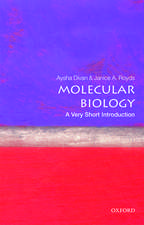Plant Evolution: An Introduction to the History of Life: Emersion: Emergent Village resources for communities of faith
Autor Karl J. Niklasen Limba Engleză Paperback – 12 aug 2016
Although plants comprise more than 90% of all visible life, and land plants and algae collectively make up the most morphologically, physiologically, and ecologically diverse group of organisms on earth, books on evolution instead tend to focus on animals. This organismal bias has led to an incomplete and often erroneous understanding of evolutionary theory. Because plants grow and reproduce differently than animals, they have evolved differently, and generally accepted evolutionary views—as, for example, the standard models of speciation—often fail to hold when applied to them.
Tapping such wide-ranging topics as genetics, gene regulatory networks, phenotype mapping, and multicellularity, as well as paleobotany, Karl J. Niklas’s Plant Evolution offers fresh insight into these differences. Following up on his landmark book The Evolutionary Biology of Plants—in which he drew on cutting-edge computer simulations that used plants as models to illuminate key evolutionary theories—Niklas incorporates data from more than a decade of new research in the flourishing field of molecular biology, conveying not only why the study of evolution is so important, but also why the study of plants is essential to our understanding of evolutionary processes. Niklas shows us that investigating the intricacies of plant development, the diversification of early vascular land plants, and larger patterns in plant evolution is not just a botanical pursuit: it is vital to our comprehension of the history of all life on this green planet.
Tapping such wide-ranging topics as genetics, gene regulatory networks, phenotype mapping, and multicellularity, as well as paleobotany, Karl J. Niklas’s Plant Evolution offers fresh insight into these differences. Following up on his landmark book The Evolutionary Biology of Plants—in which he drew on cutting-edge computer simulations that used plants as models to illuminate key evolutionary theories—Niklas incorporates data from more than a decade of new research in the flourishing field of molecular biology, conveying not only why the study of evolution is so important, but also why the study of plants is essential to our understanding of evolutionary processes. Niklas shows us that investigating the intricacies of plant development, the diversification of early vascular land plants, and larger patterns in plant evolution is not just a botanical pursuit: it is vital to our comprehension of the history of all life on this green planet.
Din seria Emersion: Emergent Village resources for communities of faith
-
 Preț: 156.84 lei
Preț: 156.84 lei - 8%
 Preț: 311.68 lei
Preț: 311.68 lei -
 Preț: 138.81 lei
Preț: 138.81 lei -
 Preț: 115.82 lei
Preț: 115.82 lei -
 Preț: 126.25 lei
Preț: 126.25 lei - 18%
 Preț: 2261.34 lei
Preț: 2261.34 lei -
 Preț: 115.53 lei
Preț: 115.53 lei -
 Preț: 548.71 lei
Preț: 548.71 lei - 8%
 Preț: 360.28 lei
Preț: 360.28 lei -
 Preț: 208.31 lei
Preț: 208.31 lei -
 Preț: 138.26 lei
Preț: 138.26 lei -
 Preț: 182.98 lei
Preț: 182.98 lei -
 Preț: 67.35 lei
Preț: 67.35 lei -
 Preț: 279.55 lei
Preț: 279.55 lei -
 Preț: 215.51 lei
Preț: 215.51 lei -
 Preț: 179.04 lei
Preț: 179.04 lei -
 Preț: 106.35 lei
Preț: 106.35 lei -
 Preț: 229.92 lei
Preț: 229.92 lei -
 Preț: 273.93 lei
Preț: 273.93 lei - 8%
 Preț: 346.31 lei
Preț: 346.31 lei -
 Preț: 94.22 lei
Preț: 94.22 lei - 18%
 Preț: 348.59 lei
Preț: 348.59 lei -
 Preț: 147.26 lei
Preț: 147.26 lei -
 Preț: 176.49 lei
Preț: 176.49 lei -
 Preț: 101.43 lei
Preț: 101.43 lei -
 Preț: 146.50 lei
Preț: 146.50 lei - 8%
 Preț: 564.99 lei
Preț: 564.99 lei - 18%
 Preț: 502.35 lei
Preț: 502.35 lei -
 Preț: 216.89 lei
Preț: 216.89 lei -
 Preț: 208.54 lei
Preț: 208.54 lei -
 Preț: 144.99 lei
Preț: 144.99 lei - 8%
 Preț: 563.24 lei
Preț: 563.24 lei -
 Preț: 185.37 lei
Preț: 185.37 lei -
 Preț: 120.81 lei
Preț: 120.81 lei -
 Preț: 167.85 lei
Preț: 167.85 lei -
 Preț: 160.63 lei
Preț: 160.63 lei -
 Preț: 183.89 lei
Preț: 183.89 lei - 9%
 Preț: 352.77 lei
Preț: 352.77 lei -
 Preț: 307.53 lei
Preț: 307.53 lei - 12%
 Preț: 290.56 lei
Preț: 290.56 lei - 9%
 Preț: 352.50 lei
Preț: 352.50 lei -
 Preț: 125.41 lei
Preț: 125.41 lei - 6%
 Preț: 324.95 lei
Preț: 324.95 lei - 9%
 Preț: 353.24 lei
Preț: 353.24 lei -
 Preț: 203.53 lei
Preț: 203.53 lei -
 Preț: 145.41 lei
Preț: 145.41 lei -
 Preț: 133.99 lei
Preț: 133.99 lei -
 Preț: 144.80 lei
Preț: 144.80 lei -
 Preț: 302.76 lei
Preț: 302.76 lei -
 Preț: 163.52 lei
Preț: 163.52 lei
Preț: 312.03 lei
Nou
Puncte Express: 468
Preț estimativ în valută:
59.71€ • 62.51$ • 49.40£
59.71€ • 62.51$ • 49.40£
Carte disponibilă
Livrare economică 15-29 martie
Livrare express 01-07 martie pentru 62.12 lei
Preluare comenzi: 021 569.72.76
Specificații
ISBN-13: 9780226342146
ISBN-10: 022634214X
Pagini: 560
Ilustrații: 144 color plates, 16 halftones, 24 line drawings, 20 tables
Dimensiuni: 152 x 229 x 36 mm
Greutate: 1.22 kg
Ediția:1
Editura: University of Chicago Press
Colecția University of Chicago Press
Seria Emersion: Emergent Village resources for communities of faith
ISBN-10: 022634214X
Pagini: 560
Ilustrații: 144 color plates, 16 halftones, 24 line drawings, 20 tables
Dimensiuni: 152 x 229 x 36 mm
Greutate: 1.22 kg
Ediția:1
Editura: University of Chicago Press
Colecția University of Chicago Press
Seria Emersion: Emergent Village resources for communities of faith
Notă biografică
Karl J. Niklas is the Liberty Hyde Bailey Professor of Plant Biology and a Stephen H. Weiss Presidential Fellow in the Plant Biology Section of the School of Integrative Plant Science at Cornell University. He is the author of Plant Biomechanics, Plant Allometry, and The Evolutionary Biology of Plants, and coauthor of Plant Physics, all published by the University of Chicago Press. He lives in Ithaca, NY.
Cuprins
Preface
IntroductionChapter 1: Origins and Early Events
Chapter 2: The Invasion of Land and Air
Chapter 3: Population Genetics, Adaptation, and Evolution
Chapter 4: Development and Evolution
Chapter 5: Speciation and Microevolution
Chapter 6: Macroevolution
Chapter 7: The Evolution of Multicellularity
Chapter 8: Biophysics and Evolution
Chapter 9: Ecology and Evolution
Glossary
Index
Index
Recenzii
“Plant Evolution sets out on a remarkable journey through the evolutionary innovations that have led to the modern green world. In each essay, Niklas gives legs to fundamental evolutionary themes by weaving seamlessly from general theory to peculiarities within the plant kingdom. Through this, readers can make explicit links to foundational knowledge typical of introductory biology courses and gain specific insights into plant evolution at both micro and macro scales. . . . Beautifully written. . . . It is also a reminder of the book's general theme that the green world is vast and complex and is a ripe breeding ground for testing unexplored evolutionary questions. In this way, Plant Evolution provides a fascinating text for teachers, researchers, and students interested in both established and revolutionary notions about why and how plants are so diverse.”
“This is a work of scholarship and of imagination, offering great insight onto patterns of plant evolution and the underlying processes that drive those patterns. It will attract a wide range of biologists as researchers and as teachers, some coming to it as evolutionary biologists, some as botanists and paleobotanists, some as physiologists and geneticists. All will be attracted by the general review of the evolutionary forces affecting plants, by the cutting edge research it summarizes, and by the interesting ideas and totally new insights interleaved throughout—several of which are cutting edge in their own right.”
“In a true tour de force, Niklas assays the mechanisms and patterns of evolution, from molecules to ecosystems, using plants as examples. Must-reading for plant scientists, Plant Evolution will both delight and challenge everyone who peers into the heart of biology.”
“The phanerozoic (the past 500 million years of geologic history) roughly translates to ‘the age of animals.’ Silly us. Plants made the atmosphere ‘breathable,’ provide food to eat, and dominate the planet’s biomass. Yet, instead of the phaneroPHYTic, the time is called the phaneroZOic. Here is the realignment. Not quite a textbook and certainly not an impersonal account, this quirky book draws together the traces of history found in the biochemistry, structure, and habits of all life (humans included) to retell life’s story from a botanist’s perspective. . . . With a 129-entry glossary and a detailed 2,138-entry index, readers can map their way through thickets of evolutionary conundrums perhaps not previously considered. . . . Niklas’s fluency and perspective makes it worth reading. Recommended.”


















